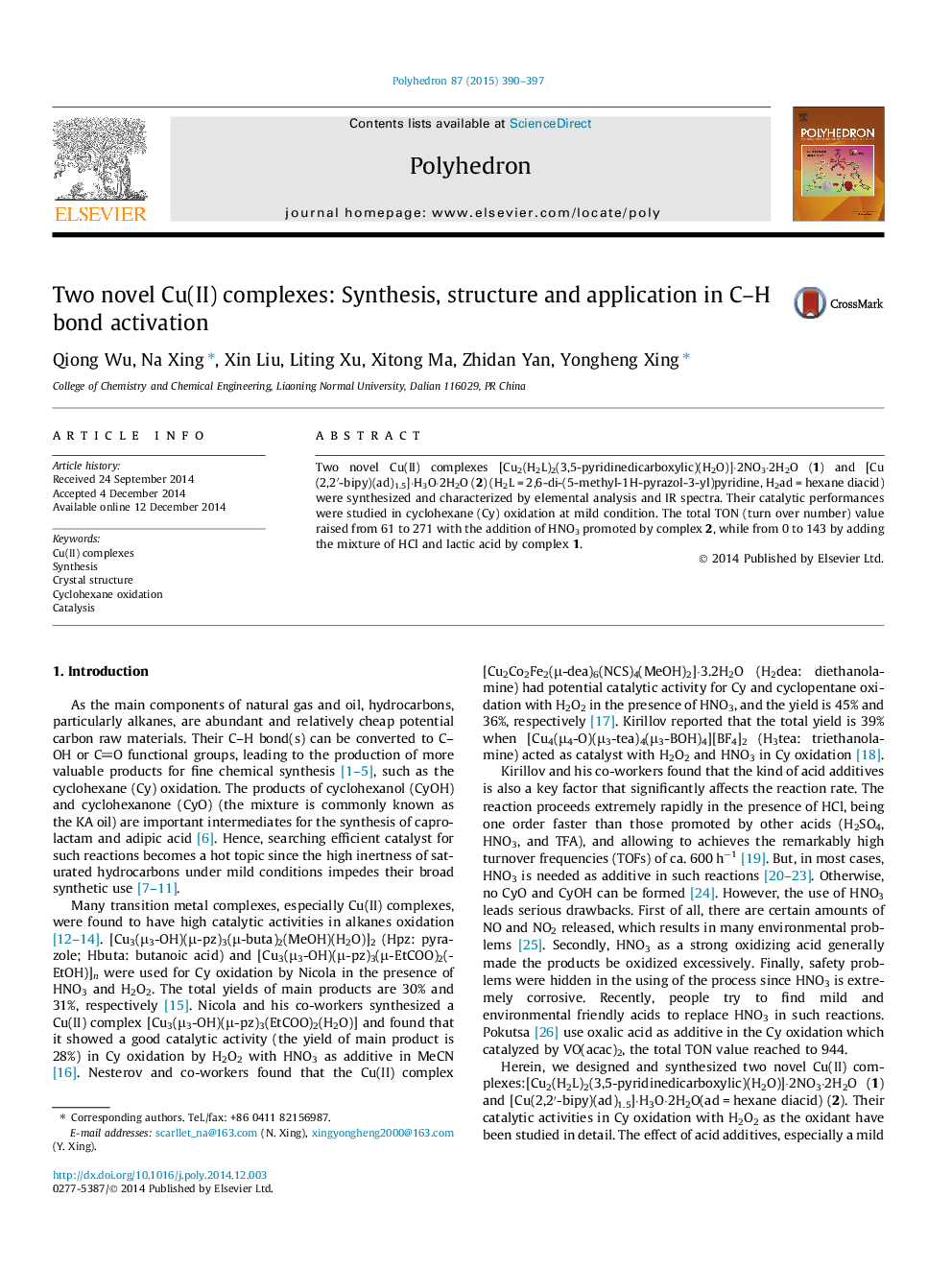| Article ID | Journal | Published Year | Pages | File Type |
|---|---|---|---|---|
| 1337382 | Polyhedron | 2015 | 8 Pages |
Two novel Cu(II) complexes [Cu2(H2L)2(3,5-pyridinedicarboxylic)(H2O)]·2NO3·2H2O (1) and [Cu(2,2′-bipy)(ad)1.5]·H3O·2H2O (2) (H2L = 2,6-di-(5-methyl-1H-pyrazol-3-yl)pyridine, H2ad = hexane diacid) were synthesized and characterized by elemental analysis and IR spectra. Their catalytic performances were studied in cyclohexane (Cy) oxidation at mild condition. The total TON (turn over number) value raised from 61 to 271 with the addition of HNO3 promoted by complex 2, while from 0 to 143 by adding the mixture of HCl and lactic acid by complex 1.
Graphical abstractTwo novel copper (II) complexes [Cu2(H2L)2(3,5-Pyridinedicarboxylic)(H2O)]·2NO3·2H2O (1) and [Cu(2,2′-Dipy)(ad)1.5]·H3O·2H2O (2) (H2L = 2,6-di-(5-methyl-1H-pyrazol-3-yl)pyridine, H2ad = hexane diacid) were synthesized and characterized by elemental analysis and IR. Their catalytic performances were studied in cyclohexane (Cy) oxidation at mild condition. The results showed that HNO3 is a good additive for the reaction promoted by complex 2, while the mixture of HCl and lactic acid is better than HNO3 for complex 1. What is more, the lactic acid is more effective for the conversion of cyclohexanol to cyclohexanone.Figure optionsDownload full-size imageDownload as PowerPoint slide
